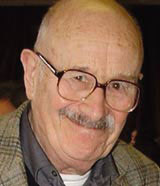Dare to be different
Creatives are, by nature, different, so their ideas are perfectly suited to brands, which need to stand out and defy fashion trends, says David Bernstein

Creatives are, by nature, different, so their ideas are perfectly suited to brands, which need to stand out and defy fashion trends, says David Bernstein
‘Why do creative people always have to be different?’ I met this complaint very often in my career. Members of the creative department were accused of being too bright for their own good. ‘That’s what they get paid for,’ I would reply – being different or, strictly speaking, relevantly different.
The legendary Bill Bernbach illustrated the distinction with a famous example. Showing a man in an ad standing on his head may attract attention, but, unless you are promoting a pair of pants, with pockets that prevent coins falling out, you will not involve the viewer. Most likely you will annoy.
A Danish poster for Ramlosa mineral water features the bottle upside down. But attention becomes involvement when you realise it’s an optical illusion and the location, by implication, a bar. There are four words: ‘One for the road’. The difference is relevant. As my mentor in the New York office of McCann Erickson used to say, ‘the difference makes the difference’. Difference, for its own sake, is rarely productive.
After all, creatives are different. They are, by nature, more right than left brain, divergent, rather than convergent in their thought processes, intuitive rather than logical.
The executive wants to order the world, is prone to classify, to segment and keep things in pigeon holes. The creative prefers to rummage around, to make connections between things previously unconnected.
The creative and the executive act out their divergent/convergent roles in their working hours. Present a group of executives with the marketing background of a brand and ask them to prepare a brief for a creative project and you can bet they will come up with virtually identical answers. But, give a brief to a group of creatives, and it is unlikely that any two of their creative solutions will be even slightly similar.
To creatives, of course, this diversity of possible solutions is one of the attractions of working in marketing communications. To executives, it is an irritation, though also an invitation to demand further solutions.
Is it any wonder that creatives are obsessed with difference, especially those intimately concerned with branding? A brand, though it has to project the same brand values over time, has to be different in space – be it the market place, supermarket shelf or consumer’s mind – and distinct from competition.
Designer André François went further, asserting that a poster ‘should first of all be totally different in style, design and idea from its neighbours and competitors’. The style must express the brand. The design must be distinctive, but true to the brand. The idea – the engine of the design – must be distinguishable from both direct competitors and neighbouring advertisements.
François was right to add dimension to difference. Brands in different categories may not compete for sales, but they can compete for attention and for consumer perceptions. Have you not confused similar approaches by unrelated brands – a technique, colour scheme, form of words, typeface and so on – and transposed ownership?
If so, it’s unlikely that you’ll be tempted to jump on a design bandwagon, borrow an executional device or echo a solution from an inappropriate problem. Fashion is the enemy of difference – as can be seen at a gathering of creatives at any smart watering hole.
-
Post a comment



